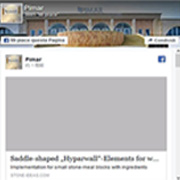Top 10 Common BNC Connector Installation Mistakes
If there's one task every security system or CCTV installer performs every day, it's terminating cables with BNC connectors. Seasoned pros install BNC connectors entirely using muscle memory, automatically preparing and installing them without even thinking about it. But for some, especially newer technicians, repeated mistakes can lead to wasted time, wasted parts cost, and a lot of hassle. A poorly installed connector may still work, but that could mean a compromised signal, poor picture, reduced bandwidth, etc.
By highlighting the top 10 BNC connector installation mistakes (in no particular order), you'll be able to focus on doing it better and repeating it with less frustration and annoyance.
Top 10 Most Common BNC Connector Installation Mistakes
1. Impedance and Similar Connector Confusion
It's easy to get the notion that a connector of a certain impedance has a certain look. For example, a 50-ohm BNC connector looks like this, and a 75-ohm connector looks like that. In fact, the appearance varies depending on factors such as impedance, manufacturer, batch date, etc. Each one should be checked and verified. Using spec sheets and, even better, organizing connectors by impedance can help avoid this confusion.
2. Indiscriminate Use of Bandwidth
Even 20 years ago, bandwidth options were limited. Today, with so many options available, it is easy to mismatch the bandwidth of the coaxial cable and the connector. Some BNC connectors are rated for a maximum of 1.5 or 3GHz. Using one on 4.5GHz coax will negatively impact performance. As more and more systems have 4K HDCVI installed, the cables should be 4K and the BNC connectors need to be rated for similar performance.
3. Confusing Connector Compatibility
It is important to always check the connector or cable manufacturer's recommendations and specifications regarding cable and connector compatibility. With the right parts and tools, you'll never have to force a connector onto a cable. Examples that you should avoid include trying to install a plenum connector on a non-plenum cable. Or try using RG-6 connectors with RG-59 cables. Otherwise, it's sure to be a wasted part or a future failure awaiting a return visit and an unhappy customer.
4. Use a "Vain" Knife
Never use a utility knife or blade to strip the cable. It's futile: Freehand cutting, even with a steady hand, won't prevent cutting too deep and damaging the cable assembly. When used correctly, the precision-leveraged stripping tool with pawls can completely prevent over-stripping.
5. Hexagon on Coaxial Cable
BNC crimping tools are a dime a dozen. The problem is that crimping is not the same as compression. Crimp connectors change the actual shape of the coaxial cable so that it is no longer round but hexagonal. This variation affects the cable's ability to transmit signals without loss. Compression connectors distribute pressure across the entire diameter of the cable, keeping everything aligned to the center.
6. Cut Coaxial Cable Without Coaxial Cutter
Have you ever tried to make an impromptu home repair because you didn't have the right tools on hand, only to create new problems? "If only I had gone and bought the right tools." This is the same lesson as with wire cutters or dykes -- they were never meant to cut coax. Neither are lineman's pliers. By their design, these tools end up distorting the cable's dielectric properties and affecting how well it transmits. Use the right tool for the job, a coaxial cable cutter. If it's out of reach, don't improvise!
7. The Confusing BNC Cable Stripper Tool
Stripping requirements may vary depending on the type of connector used. The multipurpose stripping tool is available in a choice of stripping RG-59 and RG-6, including regular, quad, and all plenum versions as well as UTP/twisted pair and CAT5e/6 cable jackets. It's very easy to use the wrong stripper tool. Even with the right tools, it's easy to use the wrong part. Improper stripping can cause the cable to be forced into place and cause potential problems or failures in the future.
8. Forget the 3-3 Rule
The cable jacket, center conductor, dielectric, and braid are all stripped with slight tolerances. Stick to the rules: 3 clockwise and 3 counterclockwise when peeling. Also, even with the blade set correctly, there is a risk of damaging components such as conductors.
9. Breeze Through Braids
Keep your work tidy to avoid unexpected problems later. For example, be sure to flare your braids out from the center. If a stray braid is left behind and it can reach the conductor in the center, the cable is shorted. If the braid is left too long and extends beyond the connectors, you may have moisture problems.
10. Tough Guy Yanks
BNC connectors are strong when properly installed. The 40 lb pull is realistic. But keep in mind that in a big job, trying to get through a lot of connections, it's easy to rely on a tough yank test before moving on. Do not do this. Yes, it's reasonable to use a pull to check connector fit, but be careful, too much pull can easily exceed its rated maximum. Take it easy, tough guy. Otherwise, you've just installed a faulty cable and have a callback in the future to track down performance issues.
The above introduces some common mistakes in installing BNC connectors, if you want to know more or want to buy BNC connectors, please contact us.
SOMI is a professional custom antenna accessories manufacturer. We have our own engineers, so we can design and produce products according to customers' requirements. All products are produced by automatic machines and fully tested to ensure the quality of our products. We have adopted the ISO9001:2008 Quality Management System as a guideline for all our company activities. Some products have passed CE certification.
BNC male connector crimp type nickel-plated attached pin and copper pipe
BNC male connector for RG58 RG59 coaxial cable using nickel-plated




